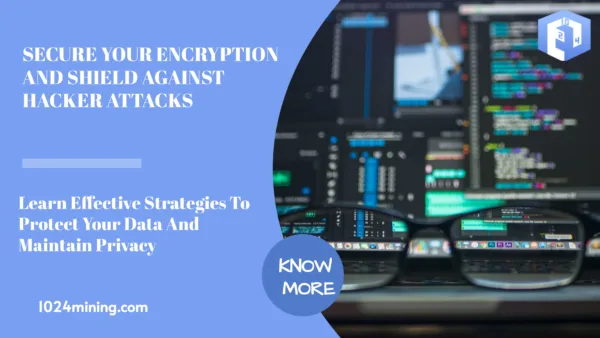In today’s digital age, encryption plays a crucial role in protecting sensitive information from unauthorized access. However, as technology advances, so do the methods used by hackers to exploit vulnerabilities in encryption systems. It is essential for individuals and organizations to stay vigilant and take proactive measures to prevent vulnerabilities and hacker attacks in the encryption field. This blog post will provide a comprehensive guide on how to strengthen encryption systems and mitigate the risk of security breaches.
Understanding Encryption Vulnerabilities
Common encryption vulnerabilities
- Weak encryption algorithms
- Inadequate key management
- Poor implementation of encryption protocols
Impact of encryption vulnerabilities
- Data breaches and unauthorized access
- Financial losses and reputational damage
- Legal and regulatory consequences
Best Practices for Encryption Security
Choosing strong encryption algorithms
- AES (Advanced Encryption Standard)
- RSA (Rivest-Shamir-Adleman)
- ECC (Elliptic Curve Cryptography)
Implementing robust key management
- Generating and storing secure encryption keys
- Regularly updating and rotating encryption keys
- Implementing secure key distribution mechanisms
Ensuring secure encryption protocol implementation
- Following industry standards and best practices
- Regularly updating encryption protocols and libraries
- Conducting security audits and vulnerability assessments
Protecting Against Hacker Attacks
Implementing multi-factor authentication
- Using strong passwords and enforcing password policies
- Implementing two-factor or multi-factor authentication methods
- Monitoring and logging authentication attempts
Regularly updating and patching systems
- Keeping operating systems and software up to date
- Applying security patches and fixes promptly
- Conducting regular vulnerability scans and penetration testing
Educating users on security best practices
- Providing training on password hygiene and phishing awareness
- Encouraging the use of secure communication channels
- Promoting a culture of security awareness and reporting suspicious activities
By understanding common encryption vulnerabilities and implementing best practices for encryption security, individuals and organizations can significantly reduce the risk of hacker attacks and data breaches. It is crucial to stay updated with the latest encryption technologies and security measures to stay one step ahead of cybercriminals. Remember, prevention is always better than cure when it comes to encryption vulnerabilities.
It is also important to invest in the right tools and resources to ensure that encryption security measures are maintained over time. Companies can benefit from regularly monitoring their networks for any suspicious activity and updating their encryption practices as new technologies emerge. By using a combination of the latest encryption tools and techniques and staying up-to-date on the latest security news, organizations can greatly reduce the risk of their data being compromised.
Ensuring the security of encrypted systems is of paramount importance. Here are some steps you can take to prevent vulnerabilities and hacker attacks in the encryption field:
1. Regularly update your encryption software and algorithms to stay ahead of potential threats.
2. Implement strong password policies to ensure only authorized individuals can access the encrypted data.
3. Utilize multi-factor authentication to add an extra layer of security to your encryption systems.
4. Conduct regular security audits to identify and address any potential weaknesses in your encryption processes.
5. Train your employees on best practices for encryption and data security to minimize human errors.
By following these preventive measures, you can significantly reduce the chances of vulnerabilities and hacker attacks in the encryption field. Remember, safeguarding your data is of utmost importance. Stay proactive and protect your sensitive information.
If you found this information helpful, share it with your network and spread awareness about encryption security. Together, we can create a safer digital environment.



